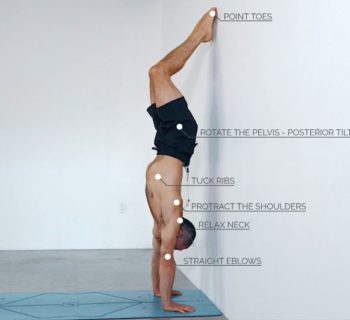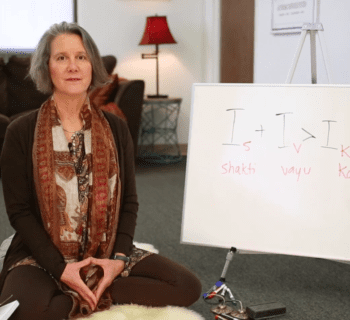Breathing is a fundamental aspect of yoga because the breath is our life force, yet it’s often overlooked. Proper breathing techniques can enhance the physical and mental benefits of yoga postures, and bring a sense of calmness and relaxation to the mind and body. Let’s explore the importance of mindful breathing in yoga, and discuss specific breathing techniques that can help you deepen your practice and unlock the full potential of your yoga journey whether you’re a beginner who is just getting started or a more advanced yogi.
What are the benefits of breathing exercises in yoga?
Breathing exercises, also known as pranayama in Sanskrit, play a significant role in yoga practice. There are numerous benefits of incorporating breathing techniques into your yoga routine.
When you focus on breathing and properly drawing air into and expelling it from your lungs, you’ll find that you’ll have improved your lung capacity. That will make it easier to breathe deeply and fully. By doing this, your body gets more oxygen, which helps to boost your energy levels.
The breath can be healing in many ways. Conscious breathing helps to calm your mind and reduce stress. When you focus on your breath, you shift your attention from your worries and anxieties, promoting relaxation and peace of mind.
Some breathing exercises can help balance your autonomic nervous system, which regulates your body’s involuntary functions, such as heart rate, digestion, and blood pressure. This creates a state of equilibrium in your body, promoting overall physical and mental health.
Certain breathing techniques can even help to cleanse your body of toxins and improve your digestion. This is achieved through deep abdominal breathing, which promotes the movement of food through your digestive system.
Overall, incorporating breathing exercises in your yoga practice is a powerful way to enhance your physical and mental well-being. It’s an easily accessible tool that everyone can use to improve their health and quality of life.
What is the difference between conscious and unconscious breathing?
Conscious breathing is when you intentionally focus on your breath, becoming aware of each inhale and exhale. You may use specific breathing techniques to control your breath and bring more oxygen into your body. This can help you relax, reduce stress, and improve your overall well-being.
On the other hand, unconscious breathing is automatic and happens without you thinking about it. It’s controlled by your autonomic nervous system, which regulates your breathing rate and depth based on your body’s needs.
In yoga, the goal is to bring more awareness to your breath and use conscious breathing techniques to deepen your practice and connect your mind and body. When you attend a vinyasa flow class, you’ll notice that the teacher will tell you when to inhale and exhale as you move through a sequence of postures. By paying attention to your breath, you can become more present in the moment and calm your mind.
What techniques can I use to help me breathe more deeply during yoga?
Here are some breathing techniques for yoga that you can use:
1. Diaphragmatic breathing: This technique involves breathing deeply into the belly, expanding the diaphragm. Breathing in this way allows you to fully inflate the lungs, drawing in a large amount of air. Place one hand on your abdomen and take a deep inhale, allowing your belly to expand. Exhale slowly, feeling your belly contract.
2. Ujjayi breathing: Also known as “ocean breath” or “breath with sound,” this technique involves breathing in and out through the nose with a slight constriction in the back of the throat. It creates a sound that is similar to the sound of the ocean. This technique can help you to stay focused and centered during your practice. Ujjayi breath is most commonly used in Ashtanga yoga. As you move from asana to asana, you let your breath guide you. The breath keeps you present in the moment during the practice.
3. Alternate nostril breathing: This technique involves breathing in through one nostril and out through the other. Use your fingers to close off one nostril while you inhale through the other, then switch sides and exhale through the other nostril. When doing this exercise, you breathe in through one nostril, hold the breath for a count, and breathe out through the other nostril. This technique can help to balance the flow of energy in the body.
4. Three-part breath: This technique involves breathing deeply into the belly, then expanding the rib cage, and finally lifting the collarbones. Inhale deeply, filling up the lower belly, then the rib cage, and finally the upper chest. Exhale slowly, releasing the breath in the reverse order.
5. Kapalbharti or illuminating skull breathwork: Kapalbhati is a yogic breathing technique that involves forceful exhalations through the nose to cleanse the respiratory system and invigorate the mind and body.
How should I begin a yoga breathing practice?
Starting a yoga breathing practice can seem intimidating at first, but it’s actually quite simple. Here are some steps you can follow:
1. Find a comfortable seated position: Sit cross-legged on a yoga mat or cushion with your spine straight and your palms resting on your knees.
2. Begin with some deep breaths: Take a few deep breaths in through your nose and out through your mouth. This will help you to relax and focus.
3. Start with simple breathing exercises: Begin with some simple breathing exercises like the “Ujjayi” breath or breath with sound, which involves breathing in and out through your nose while slightly constricting the back of your throat. This creates a gentle hissing sound that can help you focus on your breath.
4. Practice regularly: Treat this like a breathing meditation. Make sure to practice your breathing exercises regularly, ideally every day. This will help you build a strong foundation for your yoga practice and benefit most from your breathing exercises.
Breathing techniques are an essential aspect of yoga practice, providing a pathway to physical and mental well-being. Through conscious and controlled breathing, we tap into the power of our breath to calm our minds, reduce stress, and increase our overall vitality. Whether it’s the deep belly breaths of diaphragmatic breathing or the energizing Kapalabhati breaths, each technique offers unique benefits. Incorporating these techniques into our yoga practice enhances our mind-body connection, finds balance, and cultivates a sense of inner peace. So take a moment to focus on your breath, and let it guide you on a transformative journey towards a healthier, more harmonious self. Embrace the power of the breath, and unlock the full potential of your yoga practice.
Do you need some guidance on your yoga journey? You can learn from the best teachers in the world in the comfort of your own home on Omstars. Sign up today to start your free trial.
Photo by Monstera: https://www.pexels.com/photo/relaxed-black-woman-with-little-daughter-practicing-lotus-pose-at-home-7353048/










